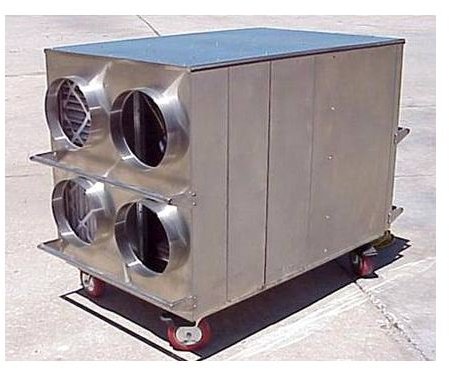A Look at Desiccant Dehumidification Energy Savings
The Desiccant Dehumidification Process
Desiccant dehumidification is a process by which air enters a system, and the content within (the desiccant), absorbs the moisture from the air. The desiccant is heated and released back into the atmosphere, eliminating the moisture in the air. This is quite energy effective and provides for a considerable savings over conventional air conditioners.
You see, in a conventional air conditioning unit, cooling coils are used to condense air and freeze out the moisture. Later, the air is warmed with reheated coils. This can be very energy intensive.
Current Methods
On average, these industrial level A/C systems were designed to keep the building cool at 72 degrees and keep the relative humidity at about 55%. In climates with even higher humidity, these systems had to be adjusted to compensate for the amount of extreme humidity to reach that 55% relative humidity goal. This is where energy efficiency is lacking, and where a supplemental system would be needed to achieve even extreme goals to bring the humidity below 55%. That’s where desiccant dehumidification comes into the picture.
Typically, these systems can be used on a seasonal basis where there can be higher temperatures and humidity at certain times of the year. This can reduce the usage time of the HVAC (or air conditioning) units. Such places, just to name a few, would include pharmaceutical storage areas, hospitals, hotels, water treatment plants, grocery stores, and ice arenas.
It’s All Relative
With the usage of desiccant dehumidification equipment, facilities that require large amounts of refrigeration like grocery stores, ice arenas, or cold storage buildings, can reduce the amount of reliance on costly refrigeration equipment processes. These facilities, which require cold temperatures anyhow, justify the use of a desiccant dehumidification system in order to bring down the relative humidity. As a result, this can keep condensation from forming on the sides of buildings. This method can remedy the reduction in mold or any kind of moisture damage like corrosion or rust.
Energy Saving Situation
Energy savings using this method is, however, dependent on a lot of factors. Environmental and atmospheric conditions are just a couple of those factors that play such a role. The amount of energy saved depends on the situation. Sometimes, the equipment might have to be adjusted depending on the season to compensate for energy savings. For instance, the desiccant dehumidification system might have to be deactivated during a dry season. There is no point in running a system when it’s not needed. It would be a waste of electricity.
To draw a better picture, as an example of an energy-saving scenario, when Wal-mart had desiccant dehumidification equipment installed in their stores, this allowed them to raise their thermostat temperature from 72 to 76 degrees. This 4 degree change saved their company 15% or more on their HVAC energy consumption. Drier air equals less usage of the conventional air conditioner.
That being said, desiccant dehumidification would be a great option for companies to save on electrical costs. The only concern that some companies tend to have is the cost of the equipment that utilizes desiccant dehumidification. It would probably take a large corporation like Wal-Mart to afford such equipment, as stated in the example above. It may be worth it to you and your company to look into the various types of dehumidification systems to see which one fits your budget best.
Resource Links
Air Conditioning, Heating, and Refridgeration News Site
ES: Engineering Systems Website: Liquid Desiccant Dehumidification
